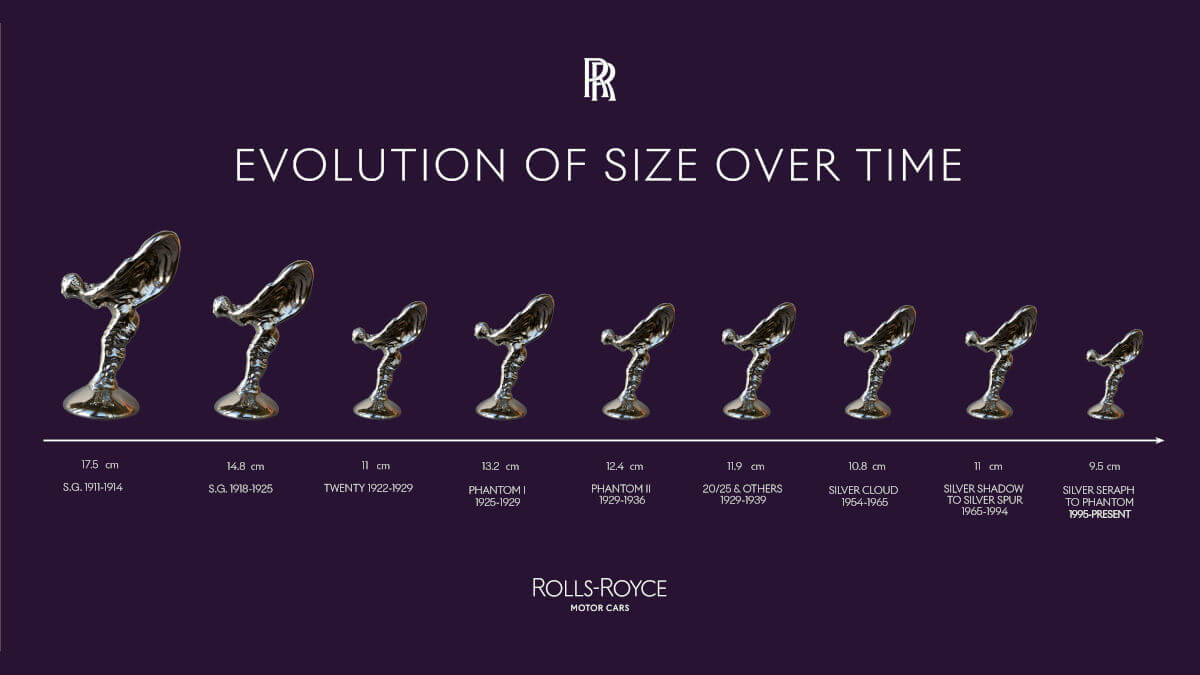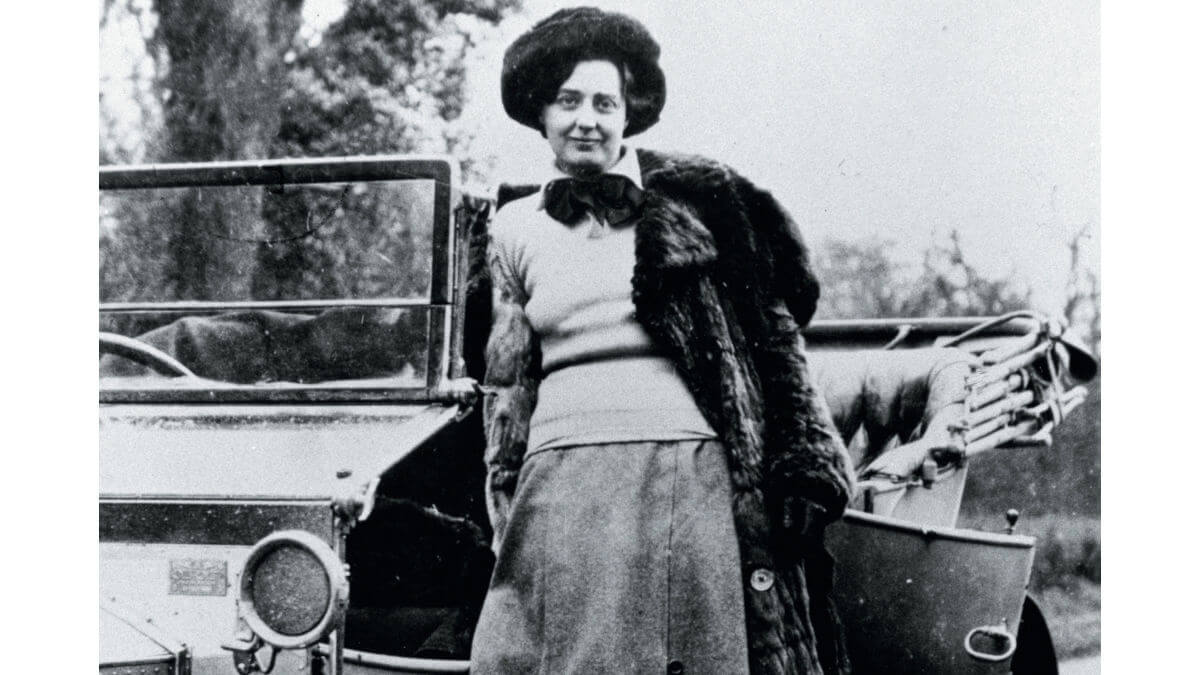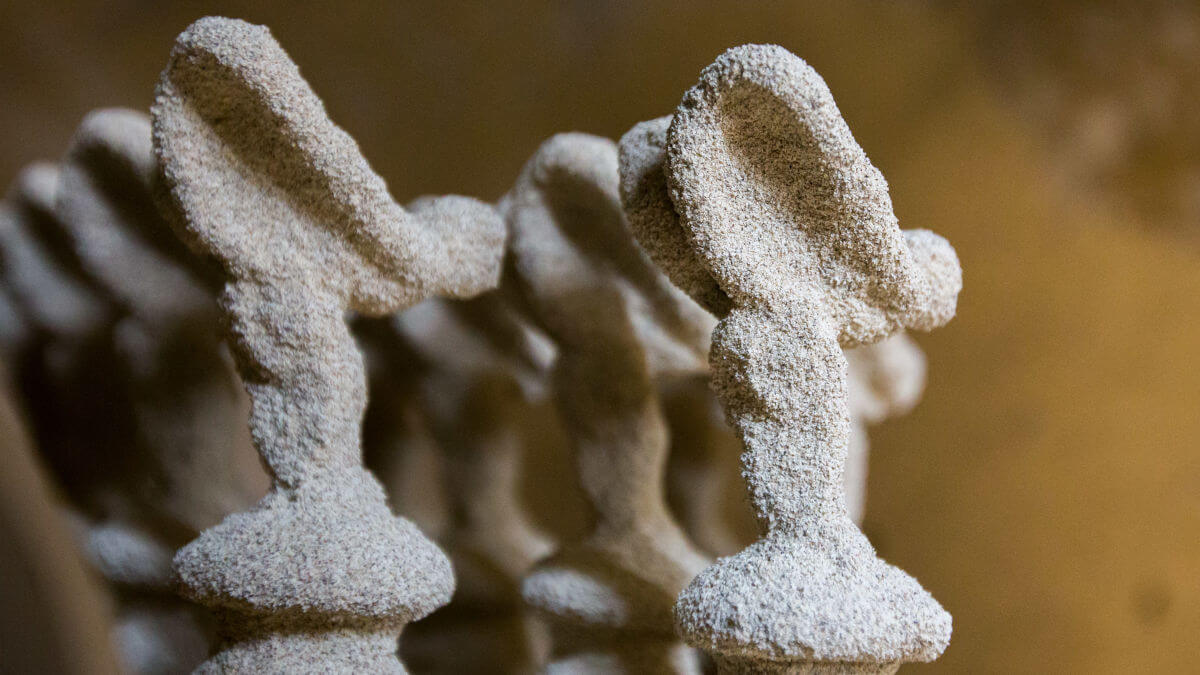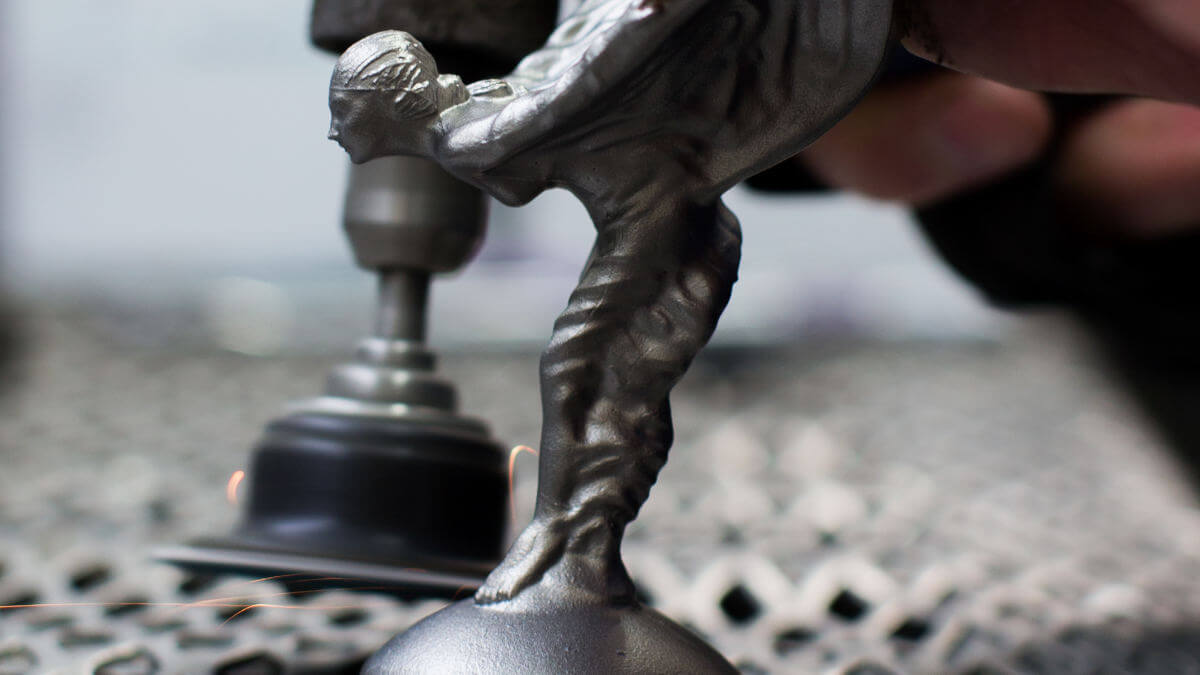The history of the Rolls-Royce mascot
For more than a century, a pretty lady has adorned the radiator grille of Rolls-Royce vehicles. Almost every car fan knows this mascot, but the story behind it is much less well known. From today’s perspective, it might seem almost questionable to use a figure with this history. But we start at the beginning and not in today. First of all, we have to introduce four personalities for this. John Walter Edward Douglas-Scott-Montagu, the second Baron Montagu of Bealieu (1866-1929) was a car pioneer in Great Britain and editor of “The Car Illustrated” magazine. Claude Goodman Johnson (1864-1926) was initially secretary of the Automobile Club of Great Britain & Ireland (now RAC) and worked for Charles Stewart Rolls at Rolls-Royce from 1903. The artist Charles Robinson Sykes (1875-1950) worked as a sculptor and illustrator under the pseudonym “Rilette” for Lord Montagu and Claude Johnson, among others. The fourth important person was Eleanor Velasco Thornton (1880-1915).
Eleanor Thornton was a model
Already in her young years Eleanor worked as a model, exotic dancer and actress. At the same time, she was first Claude Johnson’s assistant and finally, in 1902, Lord Montagu’s office manager. For Charles Sykes, she acted as a nude model and muse. Montagu had an affair with her for about 14 years, which resulted in an illegitimate daughter in 1903. She was given up for adoption, but the lord looked after her interests as a fatherly friend throughout her life. Eleanor, on the other hand, wanted nothing to do with her child. Also in 1903, a first sculpture of Eleanor was created, which Lord Montagu presented to the winner of the Gordon Bennett race in Ireland. Another figure with a similar appearance stood under the title “Bacchante” at exhibitions of the Royal Academy of Arts and in Paris. At about the same time – the exact date is no longer known – Lord Montagu commissioned Charles Sykes to create a radiator mascot for his private Rolls-Royce.














Mascot for Lord Montagu
At the time, unique radiator mascots were almost a given for wealthy car owners. They covered the inlet of the water radiators and at the same time expressed individual taste. For Lord Montagu, a small aluminium figure of a young woman in flowing robes with a finger to her lips was created under the title “The Whisper”. Once again Eleanor Thornton was the model, although it is unknown whether she knew for whom the mascot was intended. Lord Montagu liked it so much that he had it mounted on every Rolls-Royce he owned until his death in 1929. This mascot probably served as inspiration for the official Rolls-Royce radiator mascot – at least various similarities indicate this. His affair with Eleanor ended tragically in 1915. Both were aboard the SS Persia on the sea route to India. A torpedo sank the ship in just five minutes. Lord Montagu survived by good fortune in a lifeboat, while Eleanor perished.
Johnson commissioned mascot for Rolls-Royce
Rolls-Royce was among the first brands to bolt its own emblem onto its radiator. Henry Royce disliked many of the unique mascots of his clientele. he considered cats, devils or waving policemen unappropriate. Johnson, as an assistant to the management, commissioned the artist “Rilette” through Lord Montagu to create a worthy mascot. In doing so, he cited as inspiration the “Nike of Samothrace” of 190 B.C., on display in the Louvre in Paris. Sykes, however, opted for a finer, more graceful female form, for which Eleanor Thornton was probably once again available as a model. For the facial features, the artist seems to have immortalized his mother, Hannah Robinson Sykes. Originally, he called his work “The Spirit of Speed”, which, however, became “The Spirit of Ecstasy” protected by Rolls-Royce as early as 1911. Nine years later, this radiator mascot won a competition in Paris.














Sykes made each figure himself
From 1911 to 1928, Charles Sykes personally cast each one of the figures and signed them. His daughter Josephine then took over this craft until the outbreak of World War 2 in 1939. Therefore, all “Spirit of Ecstasy” figures are also different in small details until that time. In the meantime, they are produced in a wax casting process at a specialist company in Southampton. The employees there use highly accurate iron molds that are filled with wax. These wax models are covered with ceramic, the wax is melted out and the resulting negative mold is filled with liquid stainless steel. Once the metal had cooled, the molds are broken and the figures are polished in a bath of the finest steel balls. This is followed by further polishing and quality control before the radiator figures are delivered to Rolls-Royce.
Sinking mechanism became necessary
Until 1939, the radiator mascot remained an extra that had to be paid for and was only fitted to around 40 percent of the vehicles. Only then did it become standard equipment. Between 1934 and 1959, customers could order a kneeling figure instead of the standing version. Over the decades, the size and appearance of the figure were repeatedly adapted. In addition, many countries banned radiator mascots from the 1970s onwards in order to reduce the risk of injury in accidents with pedestrians. The ban was particularly drastic in Switzerland, where Rolls-Royce henceforth only packed the “Spirit of Ecstasy” in the glove box. It was only when the brand’s engineers developed a mechanism that lowered the figure at the slightest touch that it could once again be fitted on the hood of all cars. In the meantime, this mechanism works electrically and is called “the rise”. The upcoming Spectre electric model features the mascot in a modernized look.
Images: Rolls-Royce




